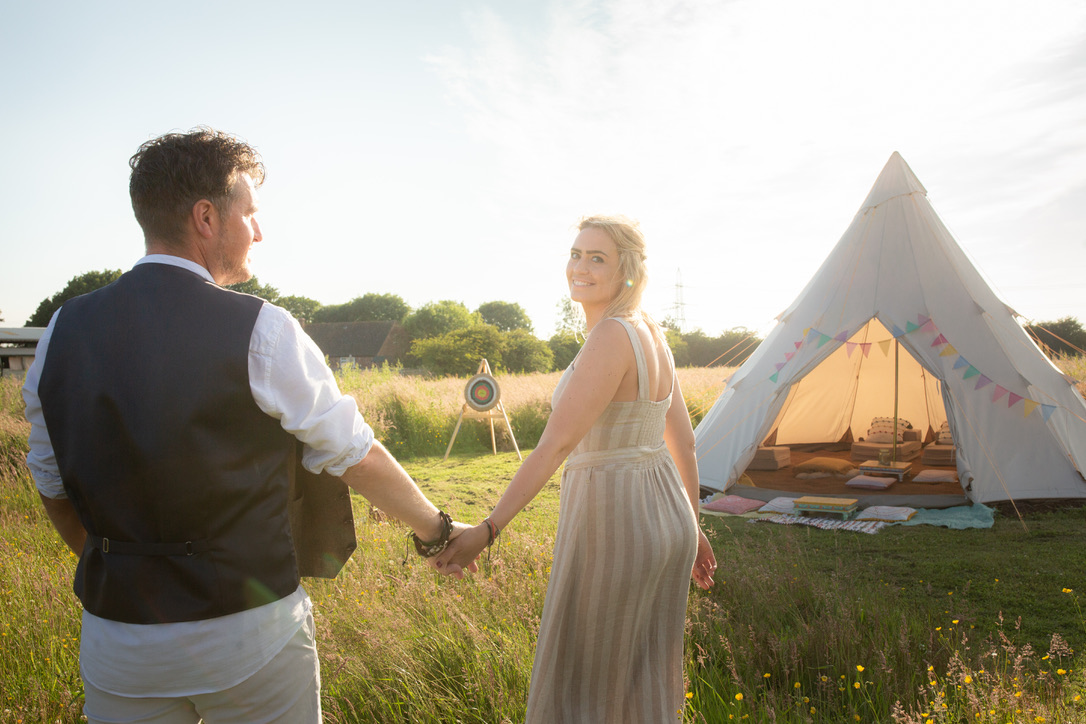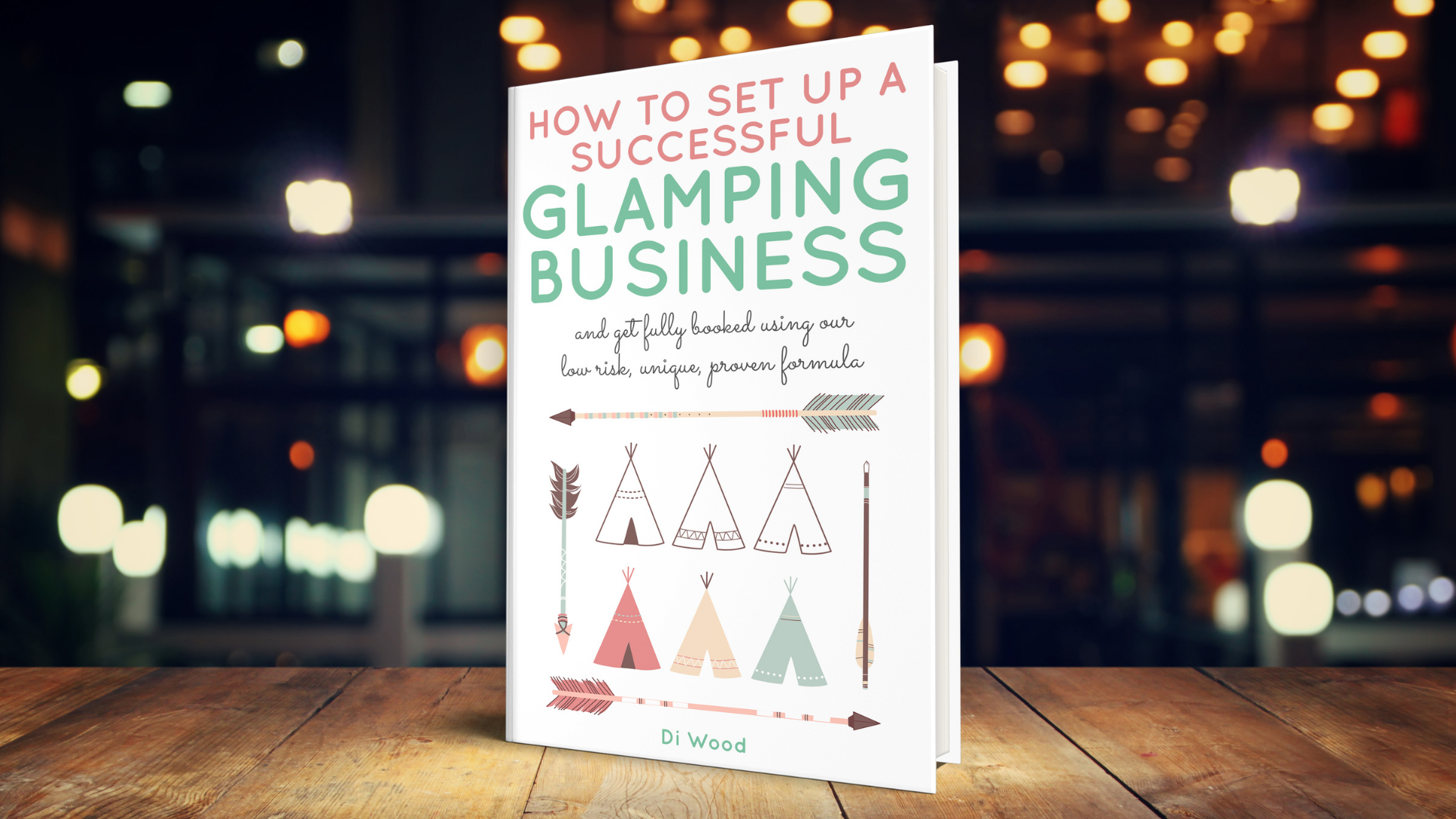Considering setting up a glamping site and don’t know where to start?
23rd February 2022
Do you have a patch of land you are currently eyeing-up, with the idea of setting up a glamping site, but don’t know how to begin? Here, we look at the initial stage of setting up a glamping business and the factors to consider, featuring useful advice and tips from the book “How To Set Up a Successful Glamping Business and Get Fully Booked”.
According to the book, there are three main phases – the first part of which we’ll look at in closer detail within this article. These are:
- Setting up the glamping site – The ‘nitty gritty’, including planning, land suitability, unit choice, identifying your target market, and nailing the branding and online presence.
- Running a glamping business – Good day-to-day operations will ensure you get great reviews. The key is to be super organised and over-provide, whilst remaining value for money. Building up to getting fully booked by learning how to get traffic to your website to book, and making your offering irresistible.
- Growing the business – Considering more units, another site, or even franchising your concept.
Setting up a glamping business: Step 1
Whether you like it or not, the first step is to initiate a relationship with your local planning department. Change of use, even if from currently unused rough grazing, and adding glampsite fixtures will necessitate planning permission. This is also the case if you are simply intending to offer only canvas temporary units with a loo shed and some decking. By all means try the Permitted Development Route (PDR), but the PDR is more designed for very short-term pop-up campsites with no fixtures, rather than a glamping site; and even if you are relying on PDR, then you still need to inform the planning department in advance. The price of £470-ish for full planning permission for change of use is relatively low for the security of knowing you are legally setting up a glamping business that can run on an ongoing basis. There is a chapter in How to set up a successful glamping business on how to present yourself to the planning department to enhance your chances of success. It is also possible to go down the route of getting planning permission by joining the Woodland Champions Scheme.
Secondly, consider if you will you live on-site, close-by, or in a different area from your land altogether. The realities of running a glamping business mean that you will be called out regularly, so don’t think you can set up a site far from where you live unless you have a manager present for a chunk of each day and someone on-call when they are not on site. Glampsites fall under the Hoteliers Act, meaning legally you have to be available to your guests at any time to deal with emergencies. When you take money from people, you have a duty of care regardless of any disclaimer you may think of adding.
Setting up a glamping business: Step 2
Assess the land itself and any other existing resources (ie. you and other assets). Is the land suitable for setting up a glamping site on? Does it flood or get boggy?
Does it have access for vehicles? Planning departments always consult the highways department who, in turn, look for things like safety of access and egress. They don’t like new turns off single track roads or access on bends. They also like you to have enough space on-site for parking at full capacity. They need to see that parking provision equals or is greater than the number of guest cars PLUS your own as well as your staff vehicles. Have you got space for adequate parking within your own boundary?
Is it a super windy site, open and exposed on one or more sides? You may need to think about planting a quick-growing wind break, or going for more solid glamping structures with a rounded shape. Wild Harvest School, run by Diana Hammill Page (Di), offers phone or video consultations, and even site visits if you are unsure whether your patch of land has potential to set up a glamping business on. As qualified permaculture designers, the team can assess the natural layout of your land; the weather effects using indicator plants, shape of trees, and soil samples, help you plan access and egress and develop the best land-use strategy, the company says.
You would also benefit from assessing upfront your other existing resources (for example staffing, time, skills, finances, technical and practical skills) in order to identify any ‘needs gap’. In other words, what skills do you have in-house already, and what will you need to ‘buy in’? Di suggests you do the ‘Assets Exercise’ in the book to help you identify what you have and what you need to secure in order to set up a glamping site.
Setting up a glamping business: Step 3
Who do you envisage using your new glamping business? Couples without kids, families, party groups…? Ascertain the demand for glamping in your area from the type of customers you envisage there. Would you be willing to change the type of customers you aim towards if no demand is there for your desired niche? Or, how about if a more lucrative niche presented itself? What about filling an unusual niche, so that you are not competing with thousands of other accommodation providers? Single night bookers, stag parties, pet owners etc. all find it harder to secure glamping accommodation. Aiming for a niche that is less provided for could provide a way to get booked-up quickly.
Once you have worked out your target market, you need to create a business name – a brand ‘feel’ – and get some photos that will appeal to your target market. Note, you need to have identified your ideal customer before you begin to brand your glamping site. Don’t fall into the trap of thinking you have to cater for everyone. It’s all about the niche. Find a lucrative niche and design your brand around that, rather than aim for a website and a glamping site that is trying to appeal to everyone as this just doesn’t work and puts more off than it attracts. Couples on a romantic break don’t share easily with noisy kids at 6am.
There is a full chapter all about branding, plus a video presentation ‘How to brand your glampsite’ on Wild Harvest School’s online ebook platform.
Setting up a glamping business: Step 4
Identifying your niche and brand feel will in turn determine your unit type/size. It may be that you have already accessed some units… So decide if they will suit the needs of your expected target market. Does your niche have any needs or preferences that you need to consider when choosing units? Eg. couples on a romantic break will expect a certain level of comfort and privacy, so your units and placing need to reflect your users’ needs and preferences. In How to set up a successful glamping business and get fully booked there is a section comparing canvas and wooden units and the return on investment for each, over time.
To connect with Di for more advice, visit: www.wildharvest.org/GlampsiteSuccess
Author of How to set up a successful glamping business and glampsite owner, Di Hammill Page, has run Wild Harvest Tipis and Activities for 17 years and speaks on stages around the country on topics to do with glamping, at shows such as The Glamping Show, and Farm Business Innovation Show. She is also regularly featured in articles and online ‘glamping business’ conferences as an expert speaker.



